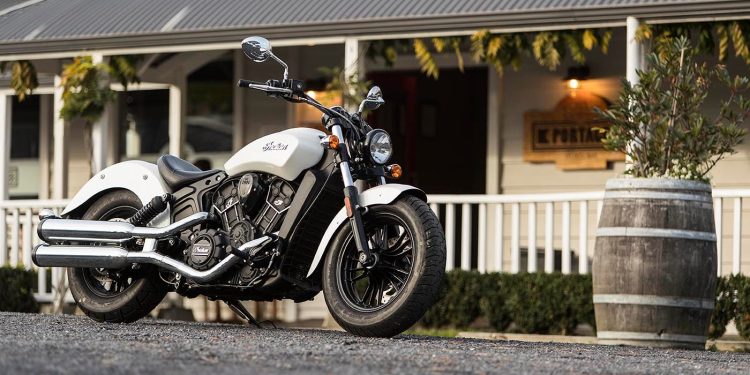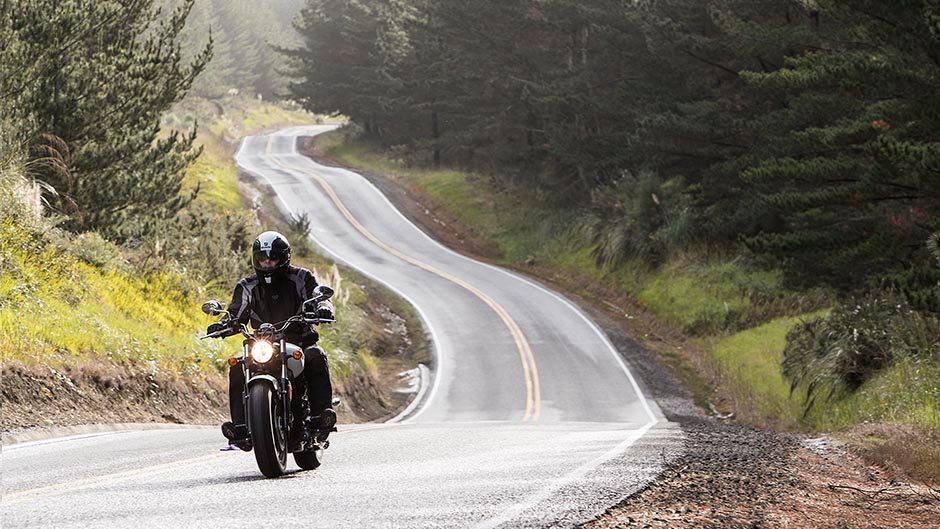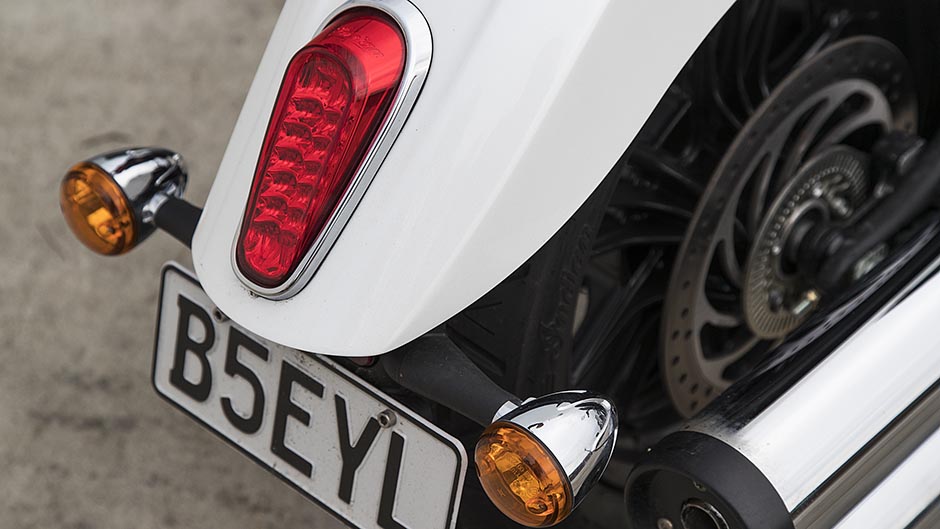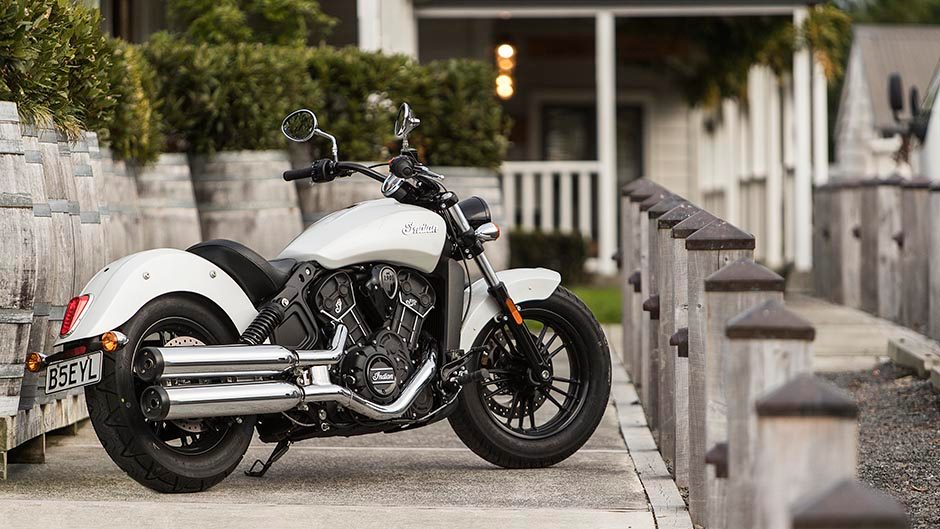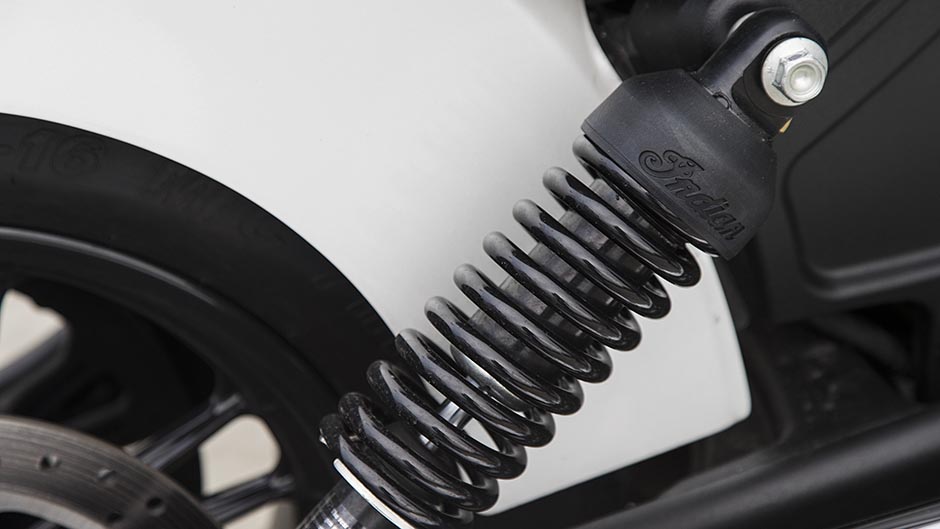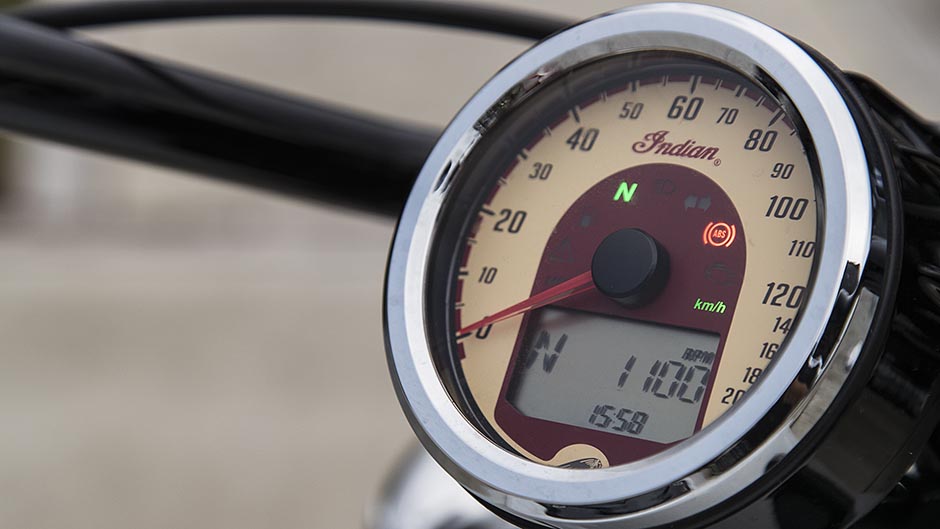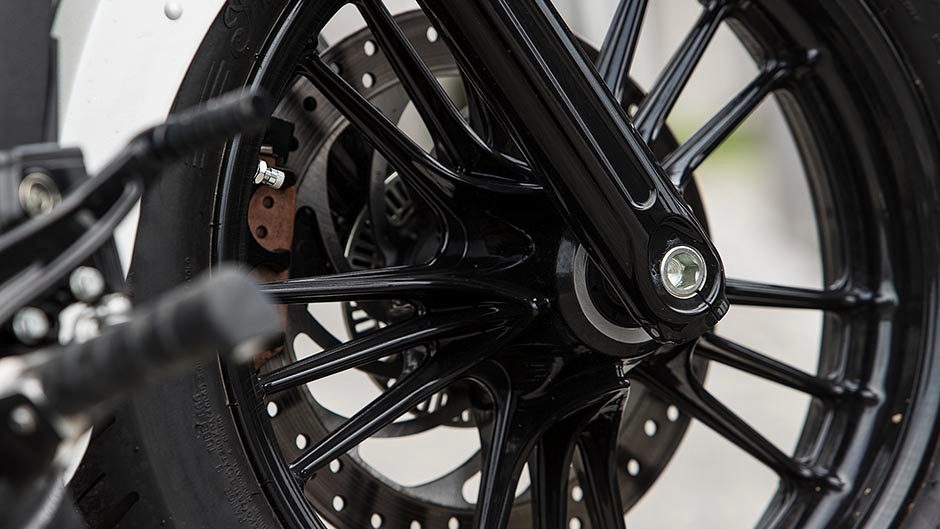2016 Indian Scout Sixty review
Words Peter Louisson | Photos Tom Gasnier
There’s a second Scout in the Indian family now. It looks and rides much the same as the original so how come it costs $4000 less?
The Indian Scout has been joined by a smaller cub version. What gives? It’s not as if there was too much wrong with the original; it rated best new cruiser of 2015 for NZ Autocar. It’s a looker, it’s comfortably the fastest of all the Indians being the lightest, it handles and rides pretty well, and stops acceptably too. Ticks most of the boxes then, apart from the fact that it totes only one person on account of its single seat. Pillion seats are available as accessories, of which there are plenty. The least expensive Indian used to sell for just under $20k (now $21,495), but you can buy the new smaller Scout, the Sixty, for $17,495.
First impressions suggest the guys at Indian have made a mistake and handed you the keys to the original bigger-engined Sixty Nine model, it’s that similar in design. But there are subtle differences; many components are painted black instead of chrome finished, including the engine, the bars, the headlight, and even the seat, the most noticeable difference of all (Scout 69’s is tan coloured). The only retained chrome of note is to be found on the mufflers. And then the differences are down to subtleties, like new foot peg brackets, a slightly different front fender, and the fact there’s no Scout logo on the tank.
The biggest difference is between your legs, no, lower than that. For the engine displaces 61 cubes instead of 69, or 999cc vs 1139cc. The displacement downsize is via a smaller bore (93 vs 96mm), with stroke of 73.6mm remaining the same, so the smaller Scout engine remains oversquare and still has a penchant for revs, which is a bit unusual in the cruiser world. It’s down by 22hp on Scout the larger, at 78 from an even 100, but torque is less affected, down from 98 to 89Nm produced at 5800rpm.
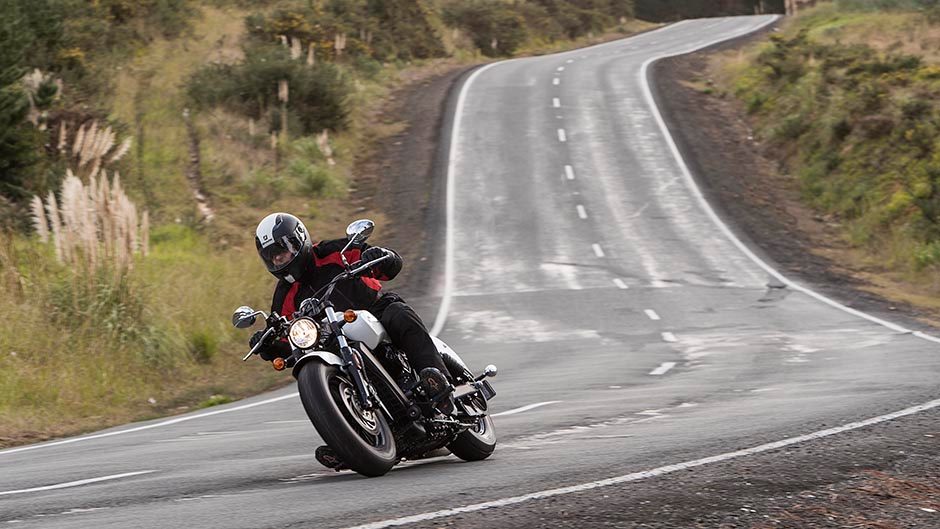
The gearbox has also lost a cog, so is now a five-speeder. The frame, suspension and brakes (ABS standard) are shared by the pair. Price is $4k less than that of the Scout 69, and it is $2k more expensive than Harley’s cheapest bigger bike, the XL Iron 883. However, it has more capacity, more power and torque and doubtless more performance. Another reason for producing a less expensive smaller version relates to global expansion of the brand. Some countries, like India and Brazil, aren’t big on motorcycles displacing more than a litre, hence the 999cc capacity of the Scout 60.
Enough of the whys and wherefores. How does it go already? With winter finally arriving with a bit of a bang, we ride the Scout 60 half on dry-ish roads, and the remainder sodden, a sky fall challenging the hardiest wet weather gear. Having ridden the almost 400kg Indian Chief Vintage last time, jumping aboard the Scout 60 is almost like mounting a 250-sized machine. It’s really low too, with a seat height of 643mm, and that low centre of gravity helps impart rather nimble handling for a bike of this nature. We’d only been aboard for about half an hour, just enough to get out of the suburbs, when memories of the original Scout came flooding back. It’s so easy to flick from side to side, it holds a line nicely, and stops confidently when both brakes are used simultaneously. The light weight helps and Scout the smaller is 10kg under the Scout 69’s total kg tally, at right on quarter of a tonne. Not so as you’d notice the difference. But you do for sure notice that this is one lightweight cruiser. It’s a delight to ride after manhandling the behemoths, and is just as quick from not having all that bulk to begin with.
The move to the five-speed gearbox is neither here nor there, as this moderately sized V-twin doesn’t mind a spot of lugging, despite peak torque not arriving until around 6000rpm. It will pull happily, smoothly from 2000rpm, which corresponds to 60km/h, so top can be used back in the ‘burbs, though fourth is better. But equally out of town this engine is as happy beavering away at low revs as it is extending itself up top, the limiter hitting just before 8000rpm.
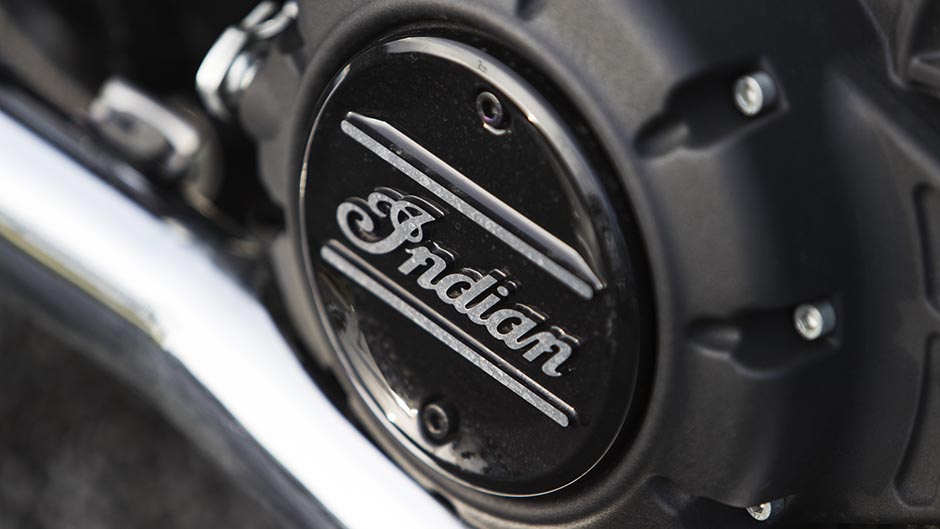
Our particular mount had sod all miles under its drive belt so we refrained from extending its legs until the end of our time with it. In the interim we discovered that it is enchanting enough spinning to 5000rpm, and picking up the next gear at around 4000rpm. With more miles on board we found that it was 0.4 sec slower than the Scout 69 both 0-100 and 80-120. So a mid four-second sprint time, high twos for the overtake. It is still quicker than most heavyweight cruisers out there, which means most other cruisers. There’s plenty sufficient speed to get yourself into trouble without using the upper revs but without doubt the peak of performance resides from around 5000rpm onward, the power dropping off after about 7500rpm. That also means 100 is a particularly easy-going 3300rpm, while 3600rpm sees 110 on the speedo.
Thanks to a counter-rotating balancer shaft, there are next to no tingles of note while riding at legal speeds, which makes jaunts on the Cub Scout that much more enjoyable. The riding position is rather easy going too, the drag bars not set too high, the pegs not too far forward. Manoeuvring the bike is easy enough, though a bit more in the way of lock wouldn’t hurt.
Steering isn’t especially quick but you find yourself hitting corner apexes right on the button, which helps with point to point progress on a cruiser, taking wide lines to help minimise the amount of lean you need to hold through the bends. This has a tad more than average before touchdown which is invariably at the forward-mounted pegs, unless your boots dot down first. We had a ball on this before our regular coffee break stop down the line, and couldn’t pick by memory or feel whether it was slower than the Scout 69. The 0.4sec performance difference is negligible.
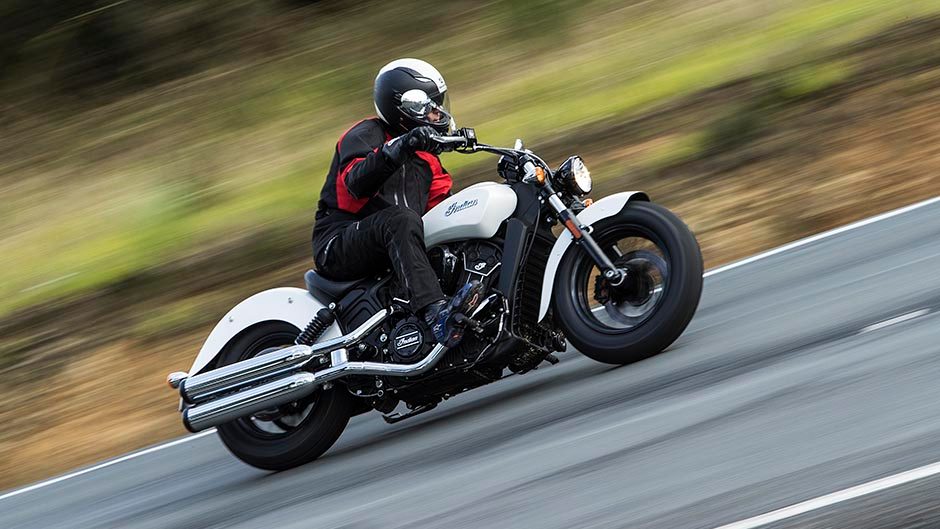
On the way home, the heavens didn’t so much open as vent. We had a couple of hairy moments as a result. On a particularly slick piece of coastal road, the rear wheel started spinning up at 100km/h during gentle acceleration while completely upright. This engine really does manage decent torque production at real world revs! And while turning into a side road at slow speed, a gentle twist on the throttle had the rear wheel trying to overtake the front one. We were fortunate to stay upright, running off the road for a bit. The Kendas are better in the dry we’re thinking. So much standing water is not a good thing for any vehicle to negotiate, four wheels or two.
We thought highly of the original Scout, and this blackened example is little the worse for having lost a few cc and a cog, while it is $4k cheaper. Otherwise the Cub Scout is the same exquisite looking, fine riding machine as its 69er sib. And if you like your bikes to be jet black, there’s that colour option as well.
As before, the Scout is the world’s finest Indian; just pick the one that suits the bank balance better.
| Model | Indian Scout Sixty | Price | $17,495 |
| Engine | 999cc, liquid-cooled, fuel injected, V2, 58kW/89Nm | Drivetrain | 5-speed, belt final drive |
| 0-100km/h | 4.58sec | 100-0km/h | 38.52m |
| 80-120km/h | 2.90sec (81.5m) | Weight | 253kg |


